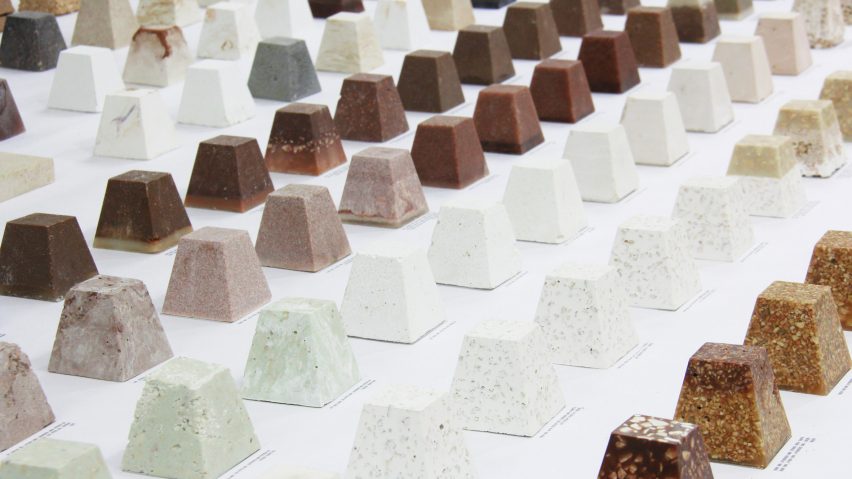
From a mushroom wall to a bank of materials, eight highlights from Jerusalem Design Week 2017
Installations, exhibitions and projects dealing with complex issues such as national identity and raw materials featured at this year's Jerusalem Design Week, and we've selected eight of the best.
The sixth and largest edition of Jerusalem Design Week took place in the Israeli city last month.
Curators Tal Erez and Anat Safran chose Islands as the theme for the eight-day event, in a bid to not only address the complexity of the host city – which is fragmented into multiple cultural, religious and social factions – but also current global conflicts.
"It is a theme that talks internationally to things that are happening – Brexit and the Trump wall in Mexico – but also takes something from Jerusalem, which is a unique place from every angle that you see it," Ran Wolf, managing director of Jerusalem Design Week, told Dezeen.
"Israeli designers know how to deal with complicated situations," said Wolf. "We have tension points and all kinds of question marks that we think about all the time. I think that brings Israeli designers to a good and creative place when they have to deal with any challenge."
Over 150 mainly Israel-based or trained designers investigated this theme in exhibitions and installations across Jerusalem, including the city's main design hub Hansen House. Read on for eight of the most interesting.
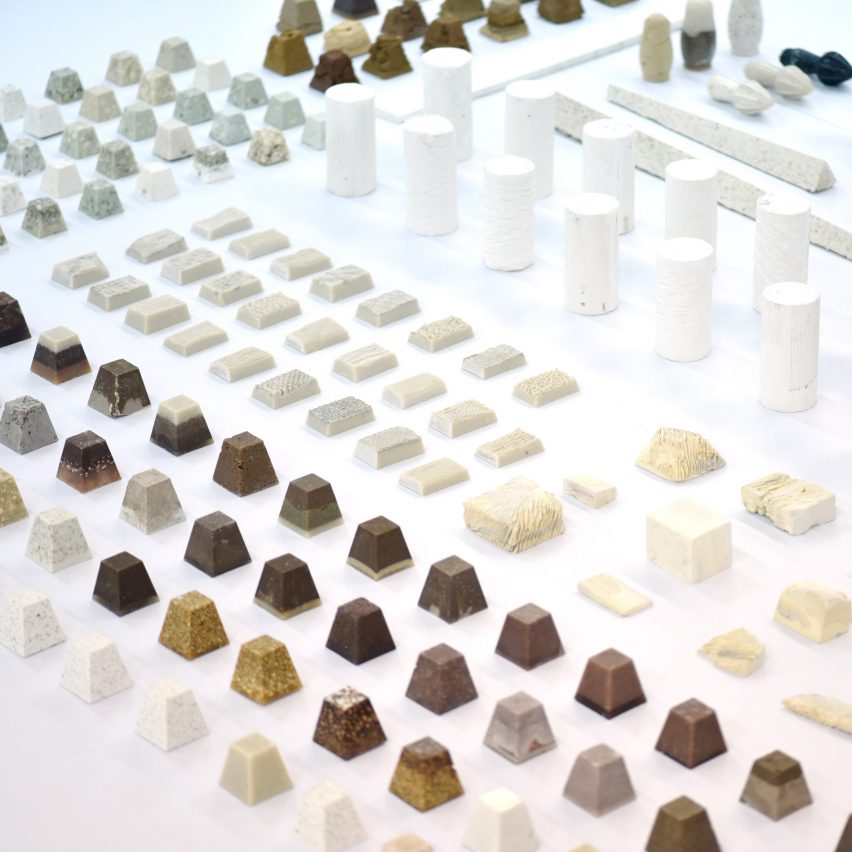
Even Yesod by Avior Zada and Eliad Michli
Shenkar College industrial design graduates Avior Zada and Eliad Michli have spent years collecting samples of raw materials from across Israel. By studying their properties, and the way they respond to processes such as casting and moulding, the duo have created a "bank of knowledge" about the country's natural materials that they believe can assist designers.
The pair have also put their own research into practice to create lemon squeezers, candlesticks and furniture using local materials, including coal emitted from power stations and basalt from the Israeli Golan Heights.
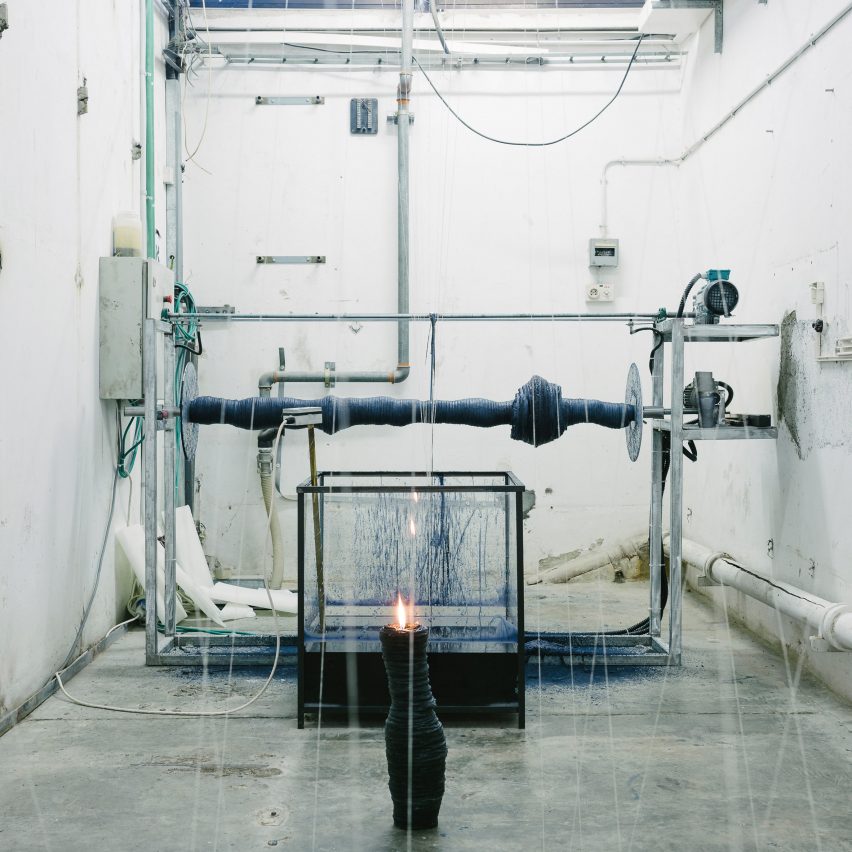
Borderline by Erez Nevi Pana and Marlene Huissoud
UK-based designer Marlene Huissoud and Israeli designer Erez Nevi Pana unveiled a custom-made candle-making contraption called Borderline as part of the International Teams programme.
The project saw yarns the same length as contentious borders around the world, dipped in black wax and coiled up to create large sculptural candles, before being symbolically burnt away. One candle represented US president Donald Trump's proposed US-Mexico border wall, while another the West Bank Barrier.
Find out more about Borderline ›
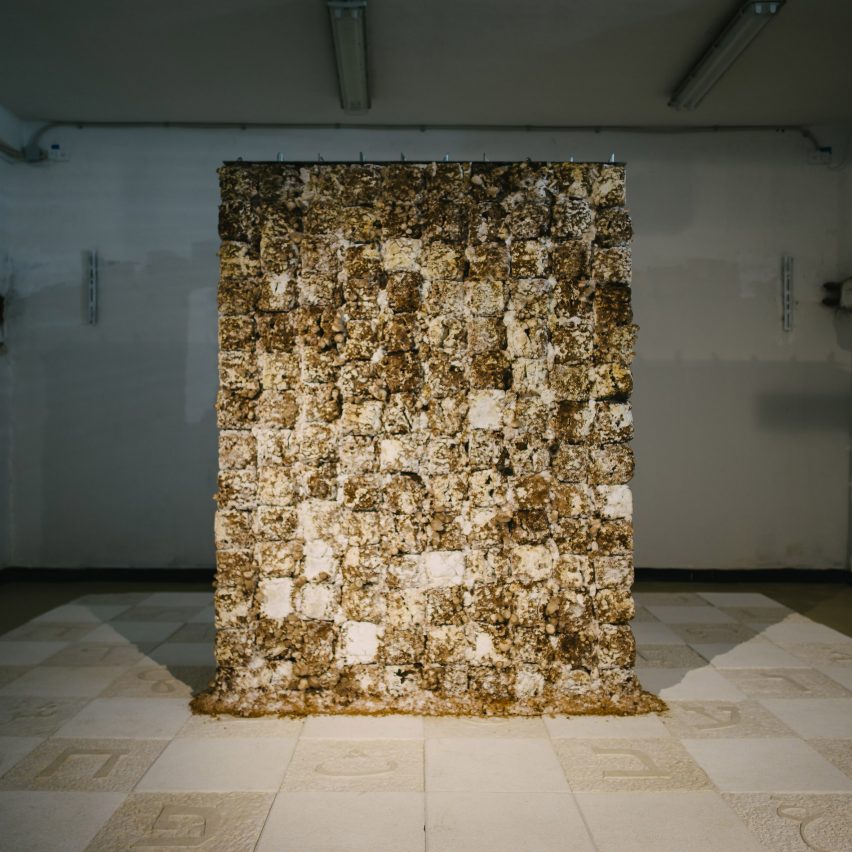
S(e)AMELESS by Rami Tareef and Maurizio Montalti
Another politicised work to emerge from the International Teams programme was S(e)AMELESS, a wall built of mycelium brick by Israeli designer Rami Tareef and Netherlands-based designer Maurizio Montalti. The aim was to transform the wall from a symbol of separation into a living, changing mushroom plantation.
The two-metre-high wall stood on a base of local stone from the West Bank, which was transcribed with the words "all that is solid melts into air".
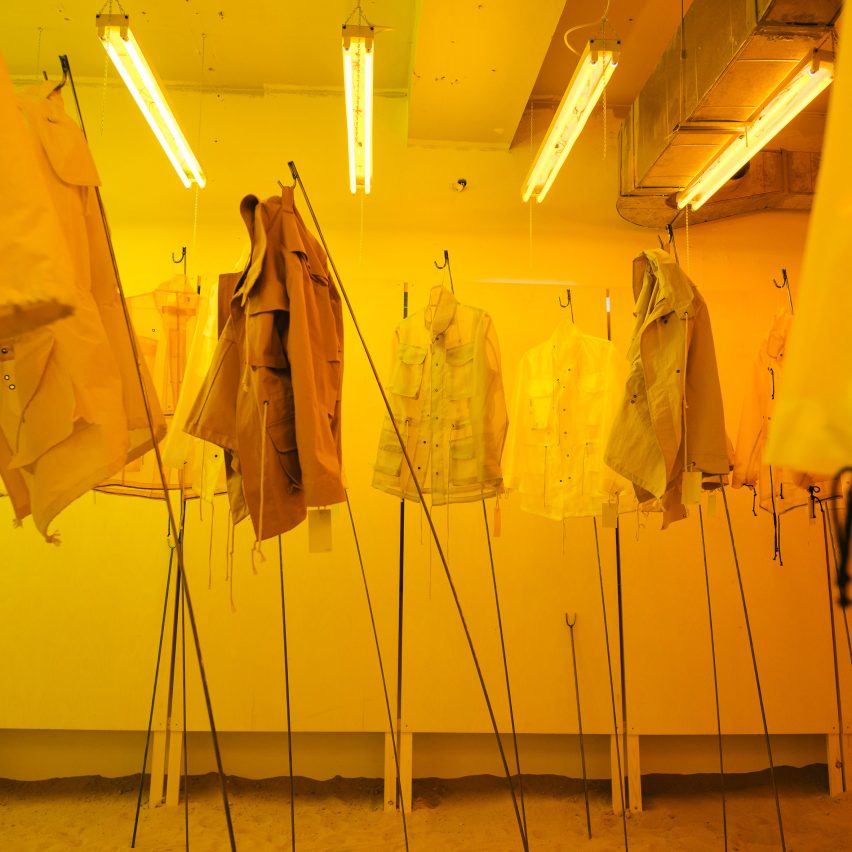
The Fashion Island by Muslin Brothers
For the Fashion Island, Israeli fashion design duo Muslin Brothers created a collection of 100 M65 army jackets in neutral colours and unusual lightweight textiles. This style of jacket was originally worn by the US Army during the Vietnam war, then later donated to the Israel Defense Forces. More recently it has been reappropriated by people as a symbol of anarchy, as well as by fashion brands as a commercial product.
The jackets were presented on poles in an artificial desert-like space covered in sand and flooded by yellow lighting. Visitors were invited to try them on, getting a feel for the garment and the different identities associated with it.
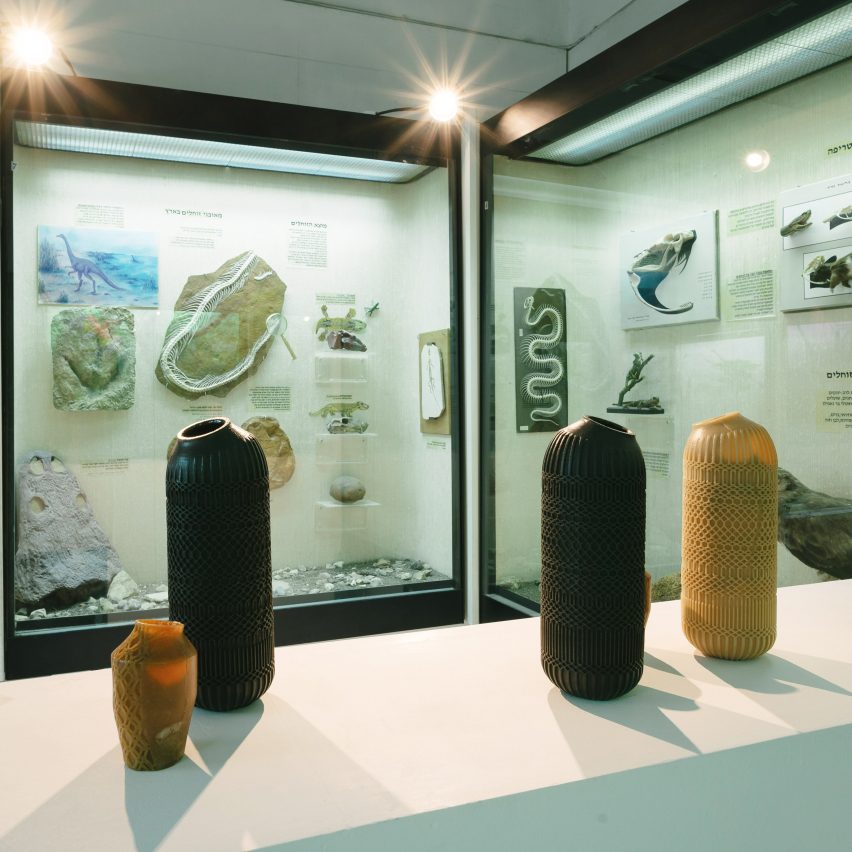
Academies Island by Bezalel Academy of Arts and Design graduates
At the city's Museum of Natural History, product designs by graduates of Jerusalem's Bezalel Academy of Arts and Design were interspersed among displays of geology and taxidermy, including a two-headed calf.
The exhibition's curators Tal Gur and Liora Rosin wanted to create a "visual-conceptual conversation" between the historic exhibits and contemporary designs.
Talia Mukmel's bioplastic water bottles with intricate raised patterns were presented alongside a fossil collection, while Guy Mishali's tin stools – created by using explosives – were on show alongside a display about the Big Bang theory.
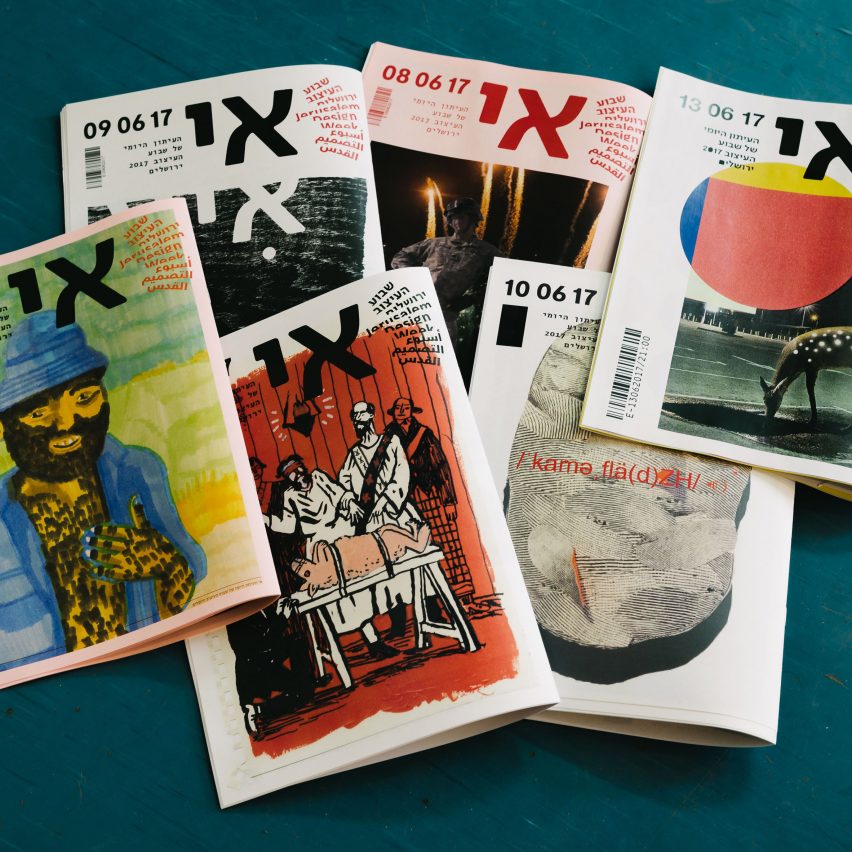
The Graphic Island
The Graphic Island explored a different kind of boundary – the one between print and digital media. For the eight days of the festival, a room at Jerusalem's former Bezeq Telephone exchange building was transformed into a fully functioning news desk that was watched over by a giant ticking clock.
Editors, reporters, photographers, illustrators and designers worked each day to produce a daily publication. A traditional printing press was installed in the space, which was used to create the visuals, while the team's screens were projected on the walls.
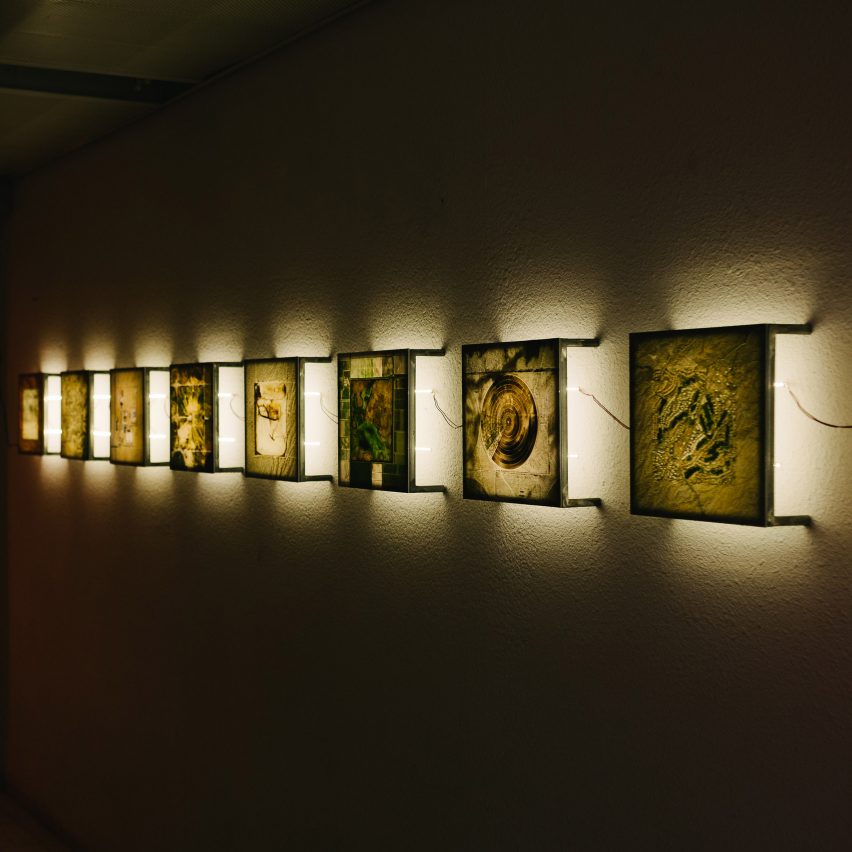
The Jefferson Grid
A series of aerial photographs, each showing a perfect square-mile of American land, was presented as part of the main exhibition. The Google Earth screengrabs offer abstracted views of fields, forests and towns across America – from desert-like landscape to lush green farmland.
Each image was taken from an Instagram account set up in 2015 called The Jefferson Grid, which documents the "grid" devised by Thomas Jefferson in the 18th century for dividing western territories acquired after the Revolutionary War. According to the anonymous account owner, the images unveil the way the 200-year-old system seems still affect the way the country is organised and the way Americans live.
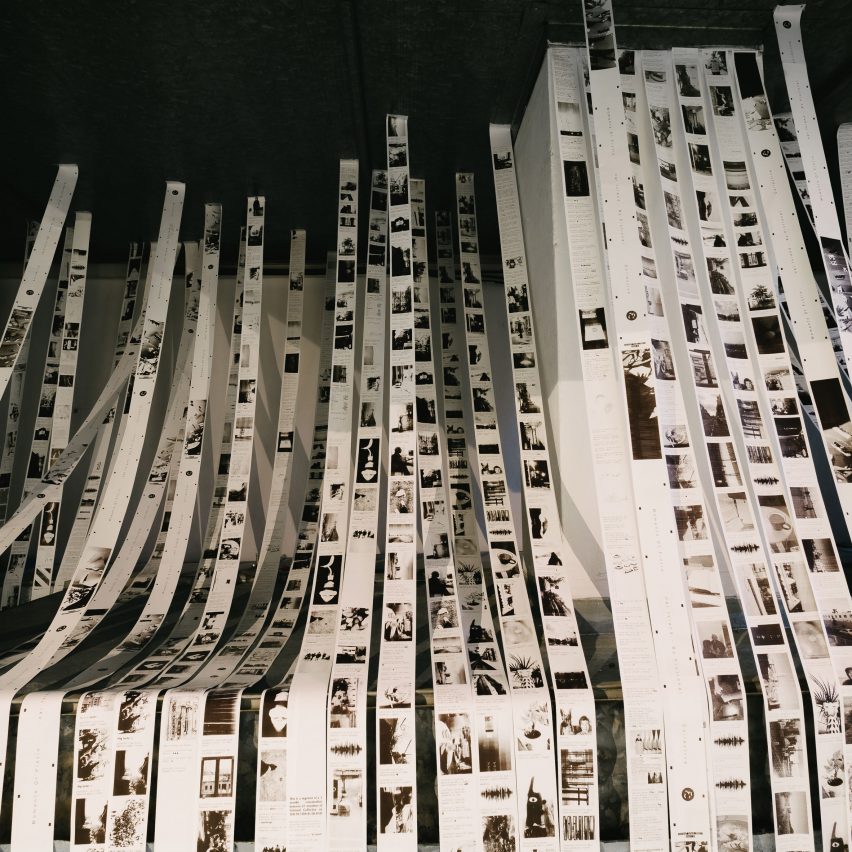
Fictional Island by Fictional Collective
The Fictional Collective is an international body of designers, architects, design researchers, writers and curators that was established at Design Academy Eindhoven. For Jerusalem Design Week, the group wanted to create an installation that displayed the ever-changing and transient nature of the collective itself.
A series of interactive machines illustrated the working process of the group, including one that allowed visitors to scroll through months worth of Whatsapp communication between members, which was printed on streams of receipt-like paper.